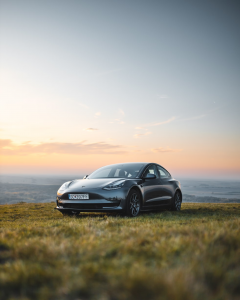
Electric vehicles (EVs) are no longer a novelty or an experimental technology. They have become a symbol of the future of transportation, offering a cleaner, more sustainable alternative to traditional gasoline-powered cars. However, their journey to the mainstream has been long and complex, spanning over a century of development, technological breakthroughs, and cultural shifts.
The history of electric vehicles dates back to the 19th century, when the first concepts of electric-powered transportation were introduced. At the time, these vehicles were limited by technological constraints, most notably battery technology, but they represented an early attempt to move away from reliance on fossil fuels.
The 20th century saw the rise of internal combustion engines (ICEs) as the dominant powertrain, leaving electric vehicles to languish in the background for decades. However, the late 20th and early 21st centuries saw a resurgence of interest in EVs, driven by growing concerns over environmental issues, energy security, and advancements in battery technology. Today, electric vehicles are rapidly becoming more accessible, practical, and desirable to consumers.
In this article, we will explore the evolution of electric vehicles, from their earliest designs and prototypes to the present-day electric cars that are becoming increasingly popular across the globe. We will delve into the technological innovations that have enabled the transition from concept to reality, the environmental and economic factors influencing their adoption, and the challenges that remain as we look toward an electric future.

1. The Early Years: 19th Century Concepts and Prototypes
1.1 The First Electric Vehicles
The story of electric vehicles begins in the 19th century, at a time when the internal combustion engine had yet to emerge as the dominant powertrain. In the early years of transportation, electric motors were already being explored as a viable alternative to steam and manual power. The first electric vehicle prototype was developed in the early 1800s, with Scottish inventor Robert Anderson creating a crude electric carriage around 1832. This early version was powered by non-rechargeable batteries, which limited its practicality.
1.2 Advancements and Setbacks
In the late 19th century, the development of electric vehicles began to gain momentum. In the United States, several inventors worked to improve electric vehicle designs. One notable figure was Thomas Parker, a British inventor, who in 1889 fitted his London-based electric car with non-replaceable batteries. This early car could travel about 15 miles on a single charge, a significant achievement at the time.
At the turn of the century, electric vehicles were actually more popular than gasoline-powered cars in some cities. They were considered clean, quiet, and relatively easy to operate, which made them ideal for short urban trips. In fact, electric cars were preferred by many wealthy individuals in cities like New York, where charging infrastructure began to appear.
However, the electric vehicle’s early success was short-lived. As the 20th century dawned, gasoline-powered cars became more practical. They had greater range, could be refueled quickly, and were cheaper to produce, thanks to Henry Ford’s mass production methods. The development of the internal combustion engine (ICE) outpaced the improvement of electric batteries, causing EVs to fall into obscurity.
2. The Rise and Fall: Early 20th Century to the Mid-Century
2.1 The Internal Combustion Engine Dominates
By the 1910s, gasoline-powered vehicles had become the dominant form of transportation. This shift was driven by the mass production techniques introduced by Henry Ford, which made cars more affordable for the general population. The development of the Model T, which could be sold at a fraction of the cost of earlier electric cars, gave gasoline-powered vehicles a significant advantage in the marketplace.
Additionally, the discovery of vast oil reserves, the establishment of fueling stations, and the widespread availability of gasoline made the internal combustion engine even more practical. Electric cars, on the other hand, still faced significant limitations in terms of range and speed, and the necessary infrastructure for recharging was practically nonexistent.
2.2 A Period of Decline for Electric Vehicles
As gasoline-powered cars became more ubiquitous, the electric vehicle market dwindled. Despite occasional technological advancements, such as improvements in battery capacity, electric vehicles were largely relegated to niche markets or luxury vehicles, with limited commercial success.
For most of the 20th century, the automobile industry’s focus was primarily on improving gasoline-powered vehicles. The growth of the highway system, increasing car ownership, and the mass production of gasoline cars created a deeply entrenched infrastructure that would be difficult for electric vehicles to break into.

3. The Renaissance of Electric Vehicles: 1970s to 1990s
3.1 The Oil Crisis and Renewed Interest in EVs
The resurgence of electric vehicles began in the 1970s, largely driven by the oil crises of 1973 and 1979. The geopolitical tensions caused by oil shortages and the rising cost of gasoline sparked a renewed interest in alternative fuel technologies, including electric vehicles. In the wake of these energy crises, governments and automakers began to explore ways to reduce dependence on foreign oil and reduce pollution.
In the United States, the government established various energy programs and incentives to promote alternative energy sources, including electric vehicles. The development of electric vehicles became a national priority, with efforts aimed at creating a clean, energy-efficient alternative to gasoline-powered cars.
3.2 Early Electric Car Models: The 1990s
The 1990s marked the next phase of electric vehicle development. In 1990, California’s Zero Emissions Vehicle (ZEV) mandate required automakers to produce vehicles with zero emissions, including electric vehicles. This regulatory push led to the development of several early electric car models, most notably the GM EV1, which was released in 1996. The EV1 was a pioneering electric car, offering a range of up to 80 miles on a single charge. However, despite its promise, the EV1 faced several challenges, including limited battery technology, high production costs, and low consumer demand. GM discontinued the EV1 in 2003, sparking controversy among environmentalists and electric vehicle advocates.
The 1990s also saw the development of other early electric vehicle prototypes, such as the Toyota RAV4 EV and the Nissan Altra EV. While these models did not achieve widespread commercial success, they laid the groundwork for future developments in the EV market.
4. The Electric Vehicle Resurgence: 2000s to Present
4.1 Tesla and the Breakthrough Moment
The true breakthrough for electric vehicles came in the early 2000s, with the founding of Tesla Motors by Elon Musk. Tesla’s entry into the electric vehicle market was a game-changer, as the company’s Roadster, released in 2008, offered unprecedented performance, range, and appeal. The Tesla Roadster, which could travel over 200 miles on a single charge, demonstrated that electric vehicles could offer comparable performance to gasoline-powered cars. Tesla’s success proved that electric cars were not just for environmentally conscious consumers, but also for people looking for performance, luxury, and cutting-edge technology.
Tesla’s subsequent models, such as the Model S, Model X, and Model 3, continued to push the envelope in terms of range, affordability, and technology. With the advent of these vehicles, Tesla became the dominant force in the electric vehicle industry, and other automakers began to take notice.
4.2 Other Major Automakers Enter the Market
In the years following Tesla’s success, other major automakers, including Nissan, Chevrolet, and BMW, began to develop their own electric vehicles. Nissan introduced the Nissan Leaf in 2010, which became one of the world’s best-selling electric cars. Similarly, Chevrolet’s Bolt EV, introduced in 2016, offered an affordable electric vehicle with a range of over 200 miles, making electric vehicles more accessible to mainstream consumers.
Global automakers such as Volkswagen, Ford, and Audi have also made significant strides in developing electric vehicle lineups, committing billions of dollars to EV development and committing to transitioning their entire fleets to electric models in the coming years.
5. The Current Landscape: EVs Going Mainstream
5.1 Increasing Consumer Adoption
Electric vehicles have become increasingly popular in recent years, as the range of available models continues to expand, and concerns about the environment, energy independence, and climate change grow. In many countries, governments have introduced financial incentives, such as tax credits, rebates, and subsidies, to make electric vehicles more affordable to consumers. These incentives, coupled with the growing availability of charging stations and the declining cost of batteries, have helped accelerate the adoption of electric vehicles.
5.2 Challenges and Roadblocks
Despite the growing popularity of electric vehicles, several challenges remain. Battery technology, while improving, still faces limitations in terms of range, charging time, and cost. Charging infrastructure is also still developing, with public charging stations not being as widespread as gasoline stations in some regions. Additionally, electric vehicles remain more expensive than their gasoline-powered counterparts, although the gap is narrowing.
5.3 The Future Outlook for Electric Vehicles
The future of electric vehicles looks bright, with advancements in battery technology, autonomous driving, and smart grid integration set to make EVs even more practical, efficient, and widespread. Many countries have announced plans to phase out internal combustion engine vehicles in favor of electric vehicles over the next few decades, signaling that electric mobility is here to stay.
As automakers continue to innovate and improve electric vehicle technology, the dream of a fully electric transportation system may one day become a reality, offering a sustainable solution to the world’s energy and environmental challenges.
Conclusion
The evolution of electric vehicles has been a long and fascinating journey, from early 19th-century prototypes to modern, high-performance electric cars that are driving the future of transportation. Today, electric vehicles are no longer a niche market or a futuristic concept—they are a reality. As technology continues to advance, and as the world seeks sustainable solutions to combat climate change, electric vehicles will play an increasingly pivotal role in shaping the future of mobility.
The road to the mainstream adoption of electric vehicles has been filled with both triumphs and challenges, but one thing is clear: the future of transportation is electric, and the shift is well underway.






